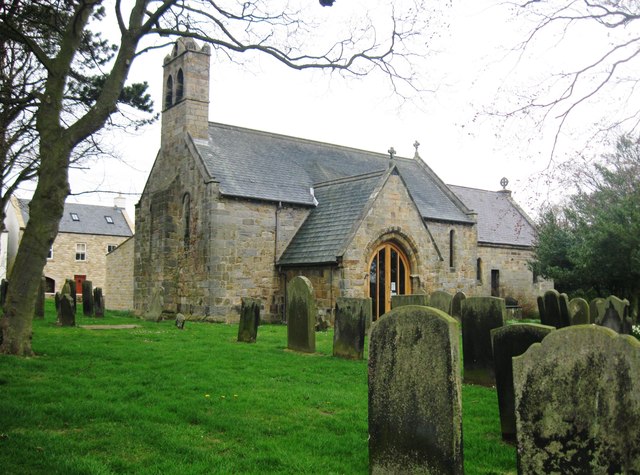Topics > Northumberland > Longframlington > Long Framlington, 1848
Long Framlington, 1848
FRAMLINGTON, LONG, a parochial chapelry, in the union of Rothbury, E. division of Coquetdale ward, N. division of Northumberland; containing 702 inhabitants, of whom 549 are in the township of Long Framlington, 11 miles (N.N.W.) from Morpeth. It comprises by computation 7,000 acres, the soil of which is indifferent, having in general a cold clay bottom; the surface is in some parts hilly, and in others level, and at the north-western extremity is a long narrow tract of wild and dreary moorland, containing about 1,000 acres. Limestone, freestone, and coal are found, but the last is not so extensively worked as formerly. Fairs for the sale of sheep, black-cattle, etc., are held on the second Tuesday in July, and on October 25th. Within the last few years the village has been much improved by the erection of several neat houses and shops. The living is a perpetual curacy, annexed to the vicarage of Felton: the impropriate tithes have been commuted for £373. There is a meeting-house for Presbyterians. The Hall hill, at this place, is supposed to have been the site of a Roman station, and the remains of a triple intrenchment are still visible; at Evergreen, near the same spot, are the foundations of a building thought to have been a fort. On a farm called Canada are large heaps of scoria, considered to have been produced by smelting ironstone, in the time of the Romans: the road commonly termed the Devil's Causeway passes near the place, and may be distinctly traced.
Extract from: A Topographical Dictionary of England comprising the several counties, cities, boroughs, corporate and market towns, parishes, and townships..... 7th Edition, by Samuel Lewis, London, 1848.

Co-Curate Page
Brinkburn Low Ward - Township, 1848
- BRINKBURN, LOW WARD, a township, in the parochial chapelry of Long Framlington, union of Rothbury, E. division of Coquetdale ward, N. division of Northumberland; containing 57 inhabitants, and comprising 579 …

Co-Curate Page
Brinkburn High Ward - Township, 1848
- BRINKBURN, HIGH WARD, a township, in the parochial chapelry of Long Framlington, union of Rothbury, E. division of Coquetdale ward, N. division of Northumberland, 9¼ miles (N.N.W.) from Morpeth; containing …


Co-Curate Page
Brinkburn Low Ward - Township, 1848
- BRINKBURN, LOW WARD, a township, in the parochial chapelry of Long Framlington, union of Rothbury, E. division of Coquetdale ward, N. division of Northumberland; containing 57 inhabitants, and comprising 579 …








